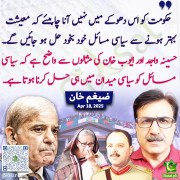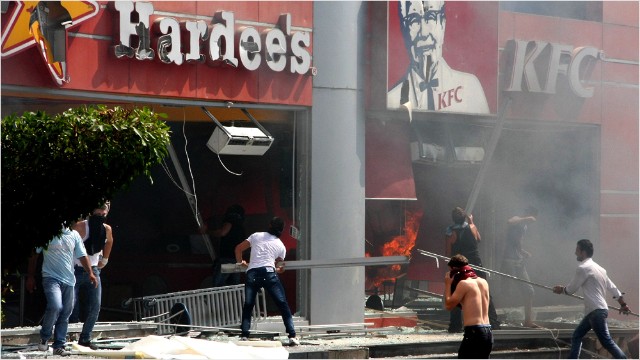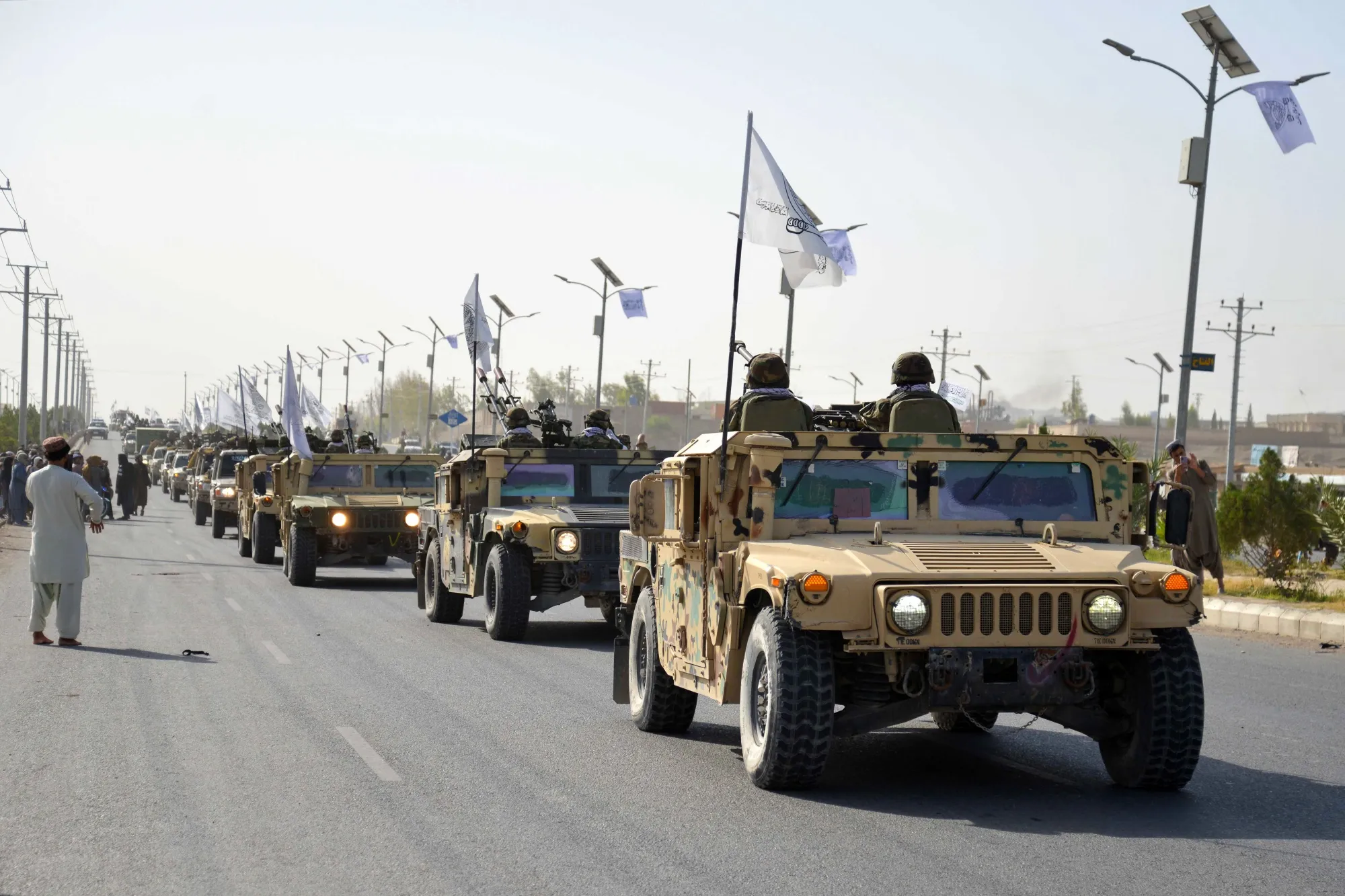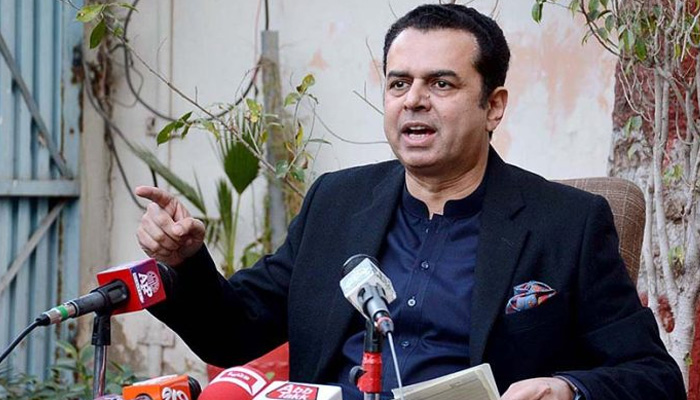Rarely does a story reveal so much so unintentionally as this months article in the New Yorker by Nicholas Schmidle reconstructing the May 2 raid by U.S. forces who found and killed Osama bin Laden in the Pakistani garrison town of Abbottabad. The article, beautifully written in the genre of Black Hawk Down, purports to tell the inside story of the Navy SEALS on the raid, right down to what they were thinking, or indeed, in the case of one of them, what he had in his pockets.
The problem, as reported initially by The Washington Post, was that Schmidle had not actually spoken to any of the SEALS involved in the raid but relied on the accounts of others who had debriefed the men. That, along with his failure to disclose this fact in the article, has prompted a vivid debate on Twitter and elsewhere, both about journalistic ethics and the accuracy of the story.
C. Christine Fair, a South Asia expert at Georgetown University in the United States, complained that the lack of transparency on the sourcing of the story was an egregious exercise of incaution that left it impossible for readers to judge its credibility. It was an issue, she said, that went beyond journalism, but played into conspiracy theories about American policy and particularly about whether bin Laden was dead at all. That those theories are alive and well was highlighted by this story in Pakistans The News, claiming that all witnesses to bin Ladens death were killed in a U.S. helicopter crash in Afghanistan on August 5. Actually, although members of SEAL Team 6 were among the dead, none of them had been involved in the raid.
As a journalist writing about Pakistan, I would be wary of taking too strong a stance either way the expression people who live in glass houses shouldnt throw stones springs to mind. I would probably split the difference and say that the more transparency on sourcing the better when it comes to Pakistan. We are all subject to manipulation and propaganda when we rely on unnamed sources, so much so that a journalist friend in Islamabad made the case to me that we should collectively decide to use only named sources. (For the record, I would try to counter that manipulation by seeking out two or more sources, preferably of different nationalities in different countries, to corroborate a story.)
At the same time, unlike a news story, a magazine article like this one is closer to book form where the demands of stylistic coherence require a huge effort of imagination, not of invention, but of empathy. It requires laborious questions about the kind of details we would not normally have time to ask like the contents of someones pockets. We cannot entirely judge it by the same standards as we would apply to daily, or even weekly news.
That said, what we do have in front of us with the New Yorkers reconstruction of the bin Laden raid is a text. We know it exists since we can link to it (primary sourcing). Where we will differ is over interpretation.
In a post over the weekend which prompted me to re-examine the New Yorker story, Jakob Steiner at RugPundits complained about Orientalism. That in turn led me to look at how small a role Pakistanis play in the story. Pause here, and consider that Pakistan is a country of some 180 million people of diverse religious, social, linguistic and cultural backgrounds. People who fret about their childrens education and grieve for their parents like the rest of us. People who in the office will ***** around the water cooler, and over dinner talk about the weather. And yes. I simplify peoples lives, because those of us who live them (signpost irony here) know how simple they are.
Then start perhaps, by noticing the dog has a name and a breed. He (she?) is called Cairo and is a Belgian Malinois.
Now scroll down to what seems to be the first clear reference to Pakistani civilians. It was in the context of whether President Barack Obama should consider an air strike on bin Ladens Abbottabad compound or a helicopter raid.
He (Defense Secretary Robert Gates) and General James Cartwright, the vice-chairman of the Joint Chiefs, favored an airstrike by B-2 Spirit bombers. That option would avoid the risk of having American boots on the ground in Pakistan. But the Air Force then calculated that a payload of thirty-two smart bombs, each weighing two thousand pounds, would be required to penetrate thirty feet below ground, insuring that any bunkers would collapse. That much ordnance going off would be the equivalent of an earthquake, Cartwright told me. The prospect of flattening a Pakistani city made Obama pause.
The helicopter raid decided, the assault plan was fine-tuned. The SEALs and the dog could assist more aggressively, if needed. Then, if bin Laden was proving difficult to find, Cairo could be sent into the house to search for false walls or hidden doors.
And of the people who lived in Abbottabad? What of their reaction? Linguistically, they are described in three letters a mob.
After describing the operation, the briefers fielded questions: What if a mob surrounded the compound? Were the SEALs prepared to shoot civilians? wrote Schmidle.
The first person to comment publicly on the raid did so on Twitter, a resident who asked what a helicopter was doing in Abbottabad so late at night. He is a man with a full name, a profile and an online identity, who I and thousands of others found and followed easily enough on the day bin Laden was killed. In the New Yorker article, he becomes merely one local.
So how did the people of Abbottabad, the mob, these people without names, react when the raid was underway?
Eventually, a few curious Pakistanis approached to inquire about the commotion on the other side of the wall. Go back to your houses, Ahmed said, in Pashto, as Cairo stood watch. There is a security operation under way. The locals went home, none of them suspecting that they had talked to an American.
The Americans had brought a translator, Ahmed. He spoke to the curious Pakistanis in Pashto, a language, we are told, that they dont tend to speak in Abbottabad. It is hard to escape the idea that the people of Abbottabad are extras in a Hollywood movie, a passive audience whose language we are neither required to understand nor to label accurately.
It was, according to the New Yorker article, a whole day later before the leadership of Pakistan reacted. After the raid, Pakistans political leadership engaged in frantic damage control. In the Washington Post, President Asif Ali Zardari wrote that bin Laden was not anywhere we had anticipated he would be, but now he is gone, adding that a decade of cooperation and partnership between the United States and Pakistan led up to the elimination of Osama bin Laden. The rather complicated engagement between the United States and Pakistan over how to handle the news about the raid, the telephone calls made within hours of bin Ladens death, are lost. Pakistans own leadership political and military in this version have no agency.
I dont know what really happened that night from May 1 into May 2. I dont know, and none of us know, how its repercussions will play out in Pakistan over the months and years ahead. But I would guess that any version of U.S. policy, based on the same thinking behind the New Yorkers story, that there are no real people on the ground, is unlikely to succeed.
By the way, to return to the subject of Black Hawk Down, my Pakistan army minder when I went to Siachen had been in Somalia at the time the Americans left. His version of what happened was quite different from the one I had seen in the film and read in the book. He remembered thousands of Somalis clamouring at the airport for food and being shot at. But he was telling me that story in 2004, soon after the Abu Ghraib scandal when not one person I met in the Pakistan army had a good word to say about the Americans. All those stories Somalia, Iraq, Afghanistan, Pakistan, 9/11, the bin Laden raid - had many sides to them and many versions.
Whether, and however much, we might disagree with them, we should however, know what they are. For me as a reader (and less as a journalist since there is always a value in telling a story from different perspectives and rarely room to fit them all into one piece), I personally am troubled most by one aspect of the New Yorker reconstruction. There appear to be no people in Pakistan.
http://blogs.reuters.com/pakistan/2011/08/08/when-there-are-no-people-in-pakistan/
The problem, as reported initially by The Washington Post, was that Schmidle had not actually spoken to any of the SEALS involved in the raid but relied on the accounts of others who had debriefed the men. That, along with his failure to disclose this fact in the article, has prompted a vivid debate on Twitter and elsewhere, both about journalistic ethics and the accuracy of the story.
C. Christine Fair, a South Asia expert at Georgetown University in the United States, complained that the lack of transparency on the sourcing of the story was an egregious exercise of incaution that left it impossible for readers to judge its credibility. It was an issue, she said, that went beyond journalism, but played into conspiracy theories about American policy and particularly about whether bin Laden was dead at all. That those theories are alive and well was highlighted by this story in Pakistans The News, claiming that all witnesses to bin Ladens death were killed in a U.S. helicopter crash in Afghanistan on August 5. Actually, although members of SEAL Team 6 were among the dead, none of them had been involved in the raid.
As a journalist writing about Pakistan, I would be wary of taking too strong a stance either way the expression people who live in glass houses shouldnt throw stones springs to mind. I would probably split the difference and say that the more transparency on sourcing the better when it comes to Pakistan. We are all subject to manipulation and propaganda when we rely on unnamed sources, so much so that a journalist friend in Islamabad made the case to me that we should collectively decide to use only named sources. (For the record, I would try to counter that manipulation by seeking out two or more sources, preferably of different nationalities in different countries, to corroborate a story.)
At the same time, unlike a news story, a magazine article like this one is closer to book form where the demands of stylistic coherence require a huge effort of imagination, not of invention, but of empathy. It requires laborious questions about the kind of details we would not normally have time to ask like the contents of someones pockets. We cannot entirely judge it by the same standards as we would apply to daily, or even weekly news.
That said, what we do have in front of us with the New Yorkers reconstruction of the bin Laden raid is a text. We know it exists since we can link to it (primary sourcing). Where we will differ is over interpretation.
In a post over the weekend which prompted me to re-examine the New Yorker story, Jakob Steiner at RugPundits complained about Orientalism. That in turn led me to look at how small a role Pakistanis play in the story. Pause here, and consider that Pakistan is a country of some 180 million people of diverse religious, social, linguistic and cultural backgrounds. People who fret about their childrens education and grieve for their parents like the rest of us. People who in the office will ***** around the water cooler, and over dinner talk about the weather. And yes. I simplify peoples lives, because those of us who live them (signpost irony here) know how simple they are.
Then start perhaps, by noticing the dog has a name and a breed. He (she?) is called Cairo and is a Belgian Malinois.
Now scroll down to what seems to be the first clear reference to Pakistani civilians. It was in the context of whether President Barack Obama should consider an air strike on bin Ladens Abbottabad compound or a helicopter raid.
He (Defense Secretary Robert Gates) and General James Cartwright, the vice-chairman of the Joint Chiefs, favored an airstrike by B-2 Spirit bombers. That option would avoid the risk of having American boots on the ground in Pakistan. But the Air Force then calculated that a payload of thirty-two smart bombs, each weighing two thousand pounds, would be required to penetrate thirty feet below ground, insuring that any bunkers would collapse. That much ordnance going off would be the equivalent of an earthquake, Cartwright told me. The prospect of flattening a Pakistani city made Obama pause.
The helicopter raid decided, the assault plan was fine-tuned. The SEALs and the dog could assist more aggressively, if needed. Then, if bin Laden was proving difficult to find, Cairo could be sent into the house to search for false walls or hidden doors.
And of the people who lived in Abbottabad? What of their reaction? Linguistically, they are described in three letters a mob.
After describing the operation, the briefers fielded questions: What if a mob surrounded the compound? Were the SEALs prepared to shoot civilians? wrote Schmidle.
The first person to comment publicly on the raid did so on Twitter, a resident who asked what a helicopter was doing in Abbottabad so late at night. He is a man with a full name, a profile and an online identity, who I and thousands of others found and followed easily enough on the day bin Laden was killed. In the New Yorker article, he becomes merely one local.
So how did the people of Abbottabad, the mob, these people without names, react when the raid was underway?
Eventually, a few curious Pakistanis approached to inquire about the commotion on the other side of the wall. Go back to your houses, Ahmed said, in Pashto, as Cairo stood watch. There is a security operation under way. The locals went home, none of them suspecting that they had talked to an American.
The Americans had brought a translator, Ahmed. He spoke to the curious Pakistanis in Pashto, a language, we are told, that they dont tend to speak in Abbottabad. It is hard to escape the idea that the people of Abbottabad are extras in a Hollywood movie, a passive audience whose language we are neither required to understand nor to label accurately.
It was, according to the New Yorker article, a whole day later before the leadership of Pakistan reacted. After the raid, Pakistans political leadership engaged in frantic damage control. In the Washington Post, President Asif Ali Zardari wrote that bin Laden was not anywhere we had anticipated he would be, but now he is gone, adding that a decade of cooperation and partnership between the United States and Pakistan led up to the elimination of Osama bin Laden. The rather complicated engagement between the United States and Pakistan over how to handle the news about the raid, the telephone calls made within hours of bin Ladens death, are lost. Pakistans own leadership political and military in this version have no agency.
I dont know what really happened that night from May 1 into May 2. I dont know, and none of us know, how its repercussions will play out in Pakistan over the months and years ahead. But I would guess that any version of U.S. policy, based on the same thinking behind the New Yorkers story, that there are no real people on the ground, is unlikely to succeed.
By the way, to return to the subject of Black Hawk Down, my Pakistan army minder when I went to Siachen had been in Somalia at the time the Americans left. His version of what happened was quite different from the one I had seen in the film and read in the book. He remembered thousands of Somalis clamouring at the airport for food and being shot at. But he was telling me that story in 2004, soon after the Abu Ghraib scandal when not one person I met in the Pakistan army had a good word to say about the Americans. All those stories Somalia, Iraq, Afghanistan, Pakistan, 9/11, the bin Laden raid - had many sides to them and many versions.
Whether, and however much, we might disagree with them, we should however, know what they are. For me as a reader (and less as a journalist since there is always a value in telling a story from different perspectives and rarely room to fit them all into one piece), I personally am troubled most by one aspect of the New Yorker reconstruction. There appear to be no people in Pakistan.
http://blogs.reuters.com/pakistan/2011/08/08/when-there-are-no-people-in-pakistan/























.png?Expires=1839520194&Key-Pair-Id=K2ZIVPTIP2VGHC&Signature=a1IfOw7rPLsPwduCLC0E7FdRDbq6Mf8WvfJEpctWRESM-2do0Ie1M77Zr6otd6UwIwQx4WrcuwUoI3FwGpkkYInKjNB4stohYD8LCpw0jZlhYr1sJejuv3z3DglJv72xZeEHyp2BrcC9aFdmY5uIJkfnEnSauR07cxOQ3e4YJcF5~OfEJZAwytwJUIP2uzyxMtMi2wny8qvmWd1dsnmU9PmneSRQKTDu9SRpJcQW46uv-mhgOstiigfC5hAOdZLngiQ1aygUuNqY8cLdqDNLh9UeV-yRw~XfXS1pFQbxA1vXOY0JKYOtl2RH4OLy6pw531nKMZu16v5veBjZzVGJJQ__)






